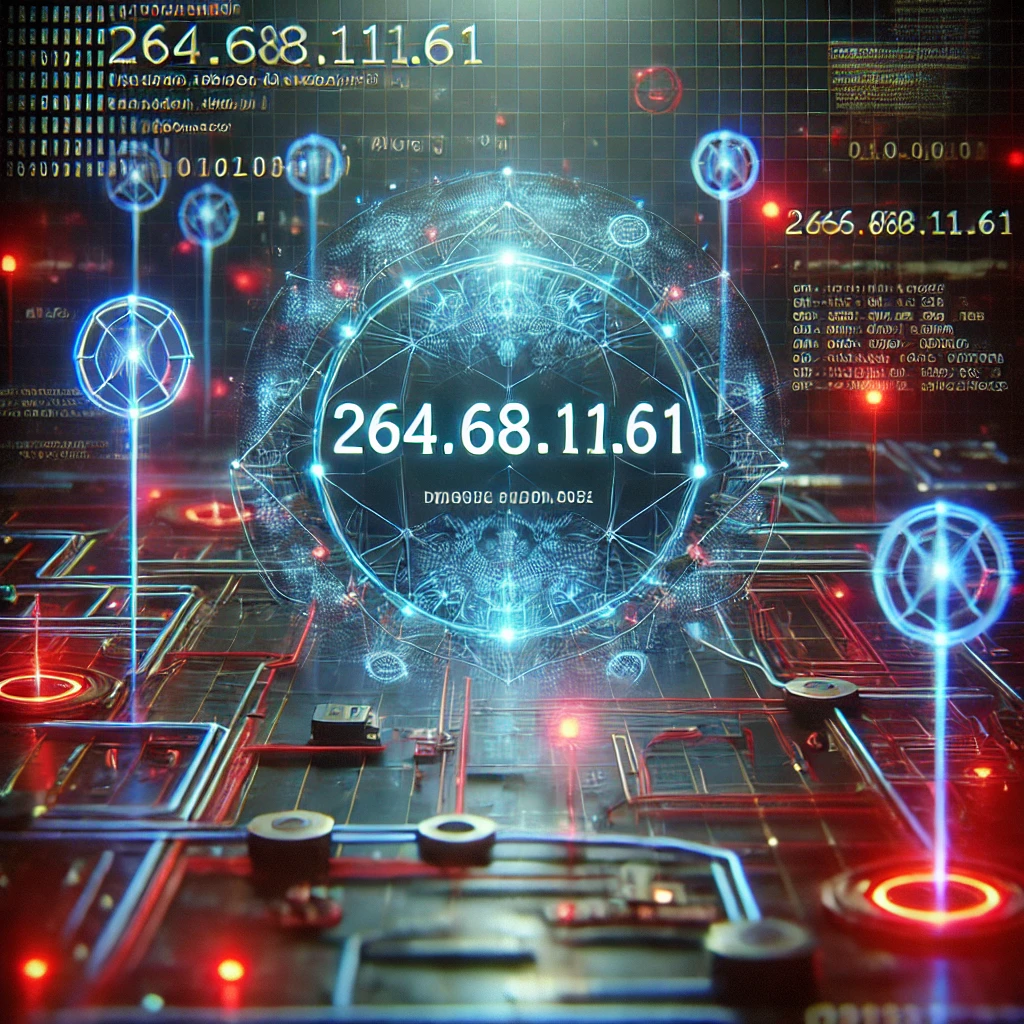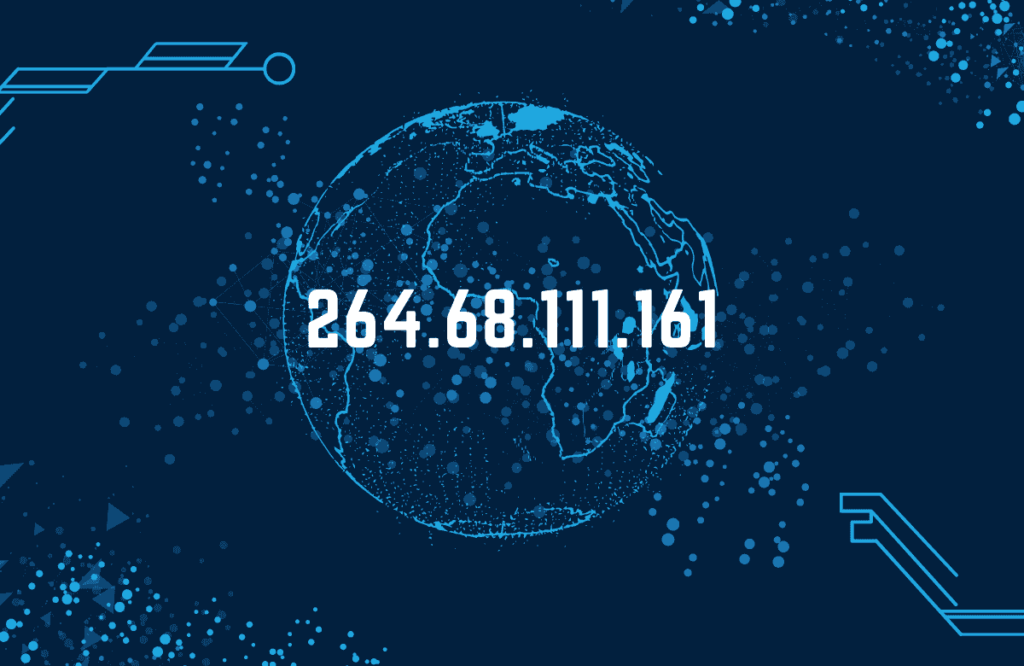In today’s world, everything we do, even sending a message or doing business, requires an Internet Protocol (IP) address. Home addresses enable us to order packages; IP addresses enable devices to navigate in the Internet. Devices are able to communicate and exchange necessary information, ensuring that the information always reaches the right destination. All devices in a global network have to communicate with each other, which simplifies the structure or address map in a network. An organized structure enables devices to communicate with each other while maintaining security. Some IP addresses that appear in device logs, in the Internet, or in discussions about a network tend to prompt doubts about the legitimacy of an IP address and what purpose it serves.
For example, “264.68.111.161” does not seem to conform to any rules of address structure.This encourages both businesses and users to think whether this is the result of an oversight or an elaborate design intended to obscure critical information. The internet, as one of its governing frameworks, has servers, routers, and networks, which means these levels’ standard formatting should their flow dictate structurally. Understanding why an address of this nature is present in particular contexts helps users and even low-tier administrative staff in cybersecurity to prevent issues or reveal underlying problems.
This blog attempts to explore “264.68.111.161” in terms of its nature, implications, possible uses, and relevant inquiries. In creating an outline for discussion, this post attempts to claim there should be order to IP addressing and explore the architecture of “264.68.111.161” regarding the arrangement of addressable spaces and established network control systems to illustrate why such structures are critical to dominant security protocols.
Apprehending the Importance of IP Addresses in Networking
An 264.68.111.161 IP address is basically a numeric identification of a person’s device in a network that communicates using the Internet Protocol. Addresses have two principal functions: as a mean descriptor, they furnish a mechanism for location addressing and also serve to identify the host or network interface. Devices would not be able to communicate through the Internet or even on private networks without IP addresses.
There are two types of Internet Protocol marking IP addresses: IPv4 and IPv6. The one formated as IPv4 used to be the most popular one until introduction of IPv6. It consisted of a 32 digit number formatted into 4 groups of numbers separated by dots. The later version of IP, IPv6 uses 128 bits system which allows an exponentially higher number of unique addresses.
Examining the Validity of 264.68.111.161
Nevertheless, further scrutiny of its numerals shows that its primary group fails to meet the criteria for IPv4 addresses due to its 264 value. The statement is correct because one of the requirements for an IPv4 address is that all four octets must have a value between 0-255. In this case, 264 exceeds 255, invalidating this address as an IPV4 address. Likewise, it does not satisfy the conditions set for an IPv6 address which proves it does not exist within the internet protocol system.
What Causes invalid IP Address to Appear:
The address 264.68.111.161 does not exist as an IP address and it can surface for different reasons. One reason could be that there is some carelessness. Users forget that while entering the address manually all the numbers must be within the specific limits. Such carelessness leads to the creation of addresses that are invalid such as numbers that are out of range which subsequently become populated in Log files, Eagle messages or even Network Configurations. Such discrepancies may produce incorrect values that controlling users and network admins would consider overly flagrant.
Some professionals within their companies attempt to illustrate the assignment and usage of an IP address with some imaginary numbers, and 264.68.111.161 could very well be one such example. Nevertheless, such documentation should realistically utilize reserved range IPs allocated for test and instructional purposes rather than random makeshift numbers that do not comply with certain IP address standards. Protecting sensitive information on networks and devices relates to Cybersecurity. Some people with bad intentions might use spoofed or non-real IP addresses for nefarious purposes. 
Importance for the accuracy and reliability of provisioning IP addresses to networks
Lax precision with an address anywhere may result in unrestrained difficulties with aligning seamlessly to fundamental connectivity, network security, and identification of any troubleshooting issues one may seek to resolve. The same way any business or organization has a computer network to manage, an isp company and all relevant government bodies need to ensure that the allocated IP addresses are precise. The use of out of the ordinary addresses poses a risk of communication breakdowns, which is very unfortunate for data transfer and service availability. When constructed properly a network is able to work. It is not possible to rout that address over the internet. Public addresses are the opposite. Also, any address not fitting the description should raise eyebrows, such as the one provided: 264.68.111.161.
Frequently Asked Questions (FAQs)
What is an IP address used for?
To put it simply, IP address is a name given to a device. Doing so allows for interaction and data exchange either over the internet or on a private network.
What Makes 256.68.111.161 Invalid IP?
264 will remain unattainable because of 255. This will allow no device to accept this IP as it breaks the standards set for IPv4. Hence, 256.68.111.161 is unvalid.
Could the IP address 264.68.111.161 be a valid one in the future?
Will always be invalid, as 255 is the maximum octet value in IPv4 addressing.
What should I do if I see an invalid IP address in my network logs?
Research for potential typographical errors, misconfigurations, or other security concerns that need attention. If suspicious behavior is detected, further investigation is needed in order to ensure network safety.
Can fake IP addresses be used for cyber attacks?
Spoofed or fake IP addresses are frequently employed for the purpose of hiding one’s identity, evading set security measures, or initiating an attack.
Conclusion
“264.68.111.161” is considered an invalid address, since there does not exist any single IPv or even I did F one addresses of my existence, let alone range without being officially assigned, will. Seeing such an address in logs, documents or security reports is a frequent result of typos, misconfigurations, or fraud. Often possessing some grounding in IP addressing aids in the efficient controlling and securing of networks and guarding against cybersecurity risks or communication errors. For safety reasons, both individuals and organizations need to verify the accuracy of these IP addresses on their first encounters, particularly with new or suspicious scenarios. Taking initiative and employing the right tools to observe and analyze network activity will reduce potential online threats and ensure the protection of all users.
